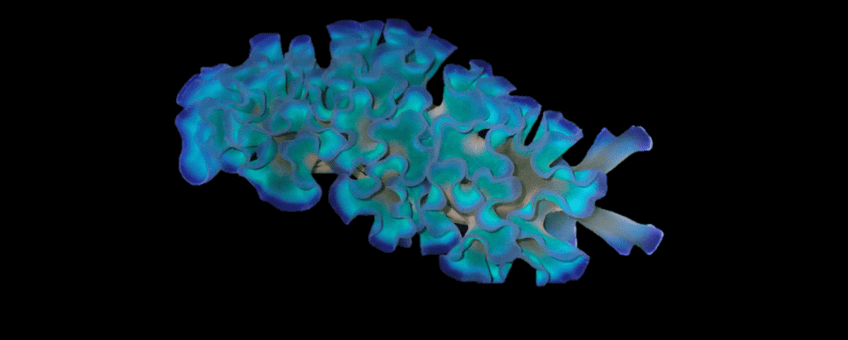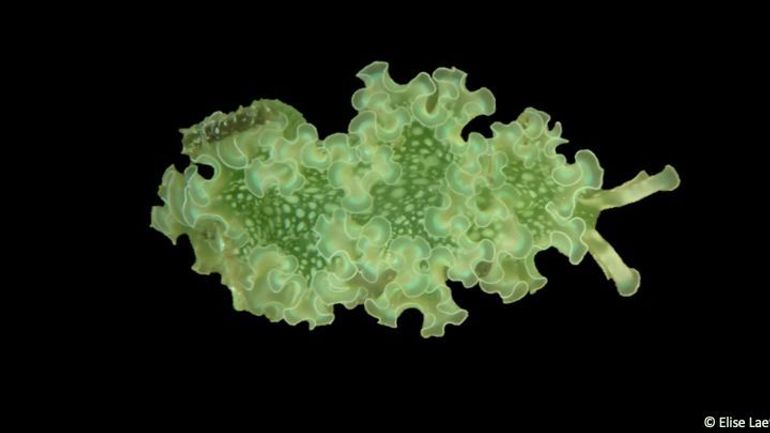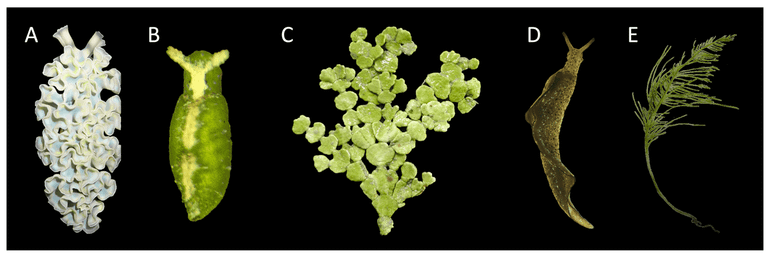
Sea slugs' survival secrets
Dutch Caribbean Nature Alliance (DCNA)This study sheds light on the photoprotective strategies employed by three sea slug species – Elysia crispata (lettuce sea slug), Elysia velutinus, and Elysia ornatae (ornate leaf slug) – collected from the reefs in Curaçao, which are living in high-light environments. These slugs steal chloroplasts (the organelle that makes energy from sunlight in plants and algae) from the algae that they eat. These stolen chloroplasts (kleptoplasts) keep making energy once they are inside the slug. This paper shows that these slugs protect their kleptoplasts from too much light, allowing them to make more energy, which the slug then uses.
Meet the team
Elysia crispata, more commonly known as the lettuce sea slug, was typically found at depths between five and fifteen meters. These sea slugs have diverse coloration, which can suggest population-specific variations in light-seeking behavior. Unlike previous reports of hiding behavior, this study observed lettuce sea slugs exposed to full sunlight and using its own body to provide shading. This behavior demonstrated the species' ability to physically control light reaching its kleptoplasts.

Elysia velutinus was found to prefer depths of four to six meters and relied on macroalgal food for camouflage. It exhibited a light-avoidance response in laboratory trials. The study suggests that these slugs likely avoid excess light by seeking shelter among algae, displaying a unique photoprotective strategy.
Elysia ornata, or ornate leaf slug, typically resides in shallow waters and is associated with Bryopsis plumosa (green algae). These sea slugs displayed a strong negative phototactic response, indicating a preference for darkness. Despite having the highest optimal light intensity among the studied species, ornate leaf slugs showed signs of oxidative stress, possibly due to limited photoprotective mechanisms.

Implications
The study emphasizes the need to consider natural light conditions when studying photosymbiotic organisms, revealing a disparity between laboratory experimental conditions and field reality. The intricate photoprotective adaptations observed in these sea slug species provide valuable insights into their interactions with high-light environments and stress the importance of understanding the ecological context for accurate research findings.
DCNA
The Dutch Caribbean Nature Alliance (DCNA) supports (science) communication and outreach in the Dutch Caribbean region by making nature related scientific information more widely available through, amongst others, the Dutch Caribbean Biodiversity Database, DCNA’s news platform BioNews, and through the press. This article contains the results from several (scientific) projects but the projects themselves are not DCNA projects. No rights can be derived from the content. DCNA is not liable for the content and the in(direct) impacts resulting from publishing this article.
Text: DCNA
Images: Elise M. J. Laetz; Laia Burgués Palau (lead photo: E. crispata); Giulia Senna
